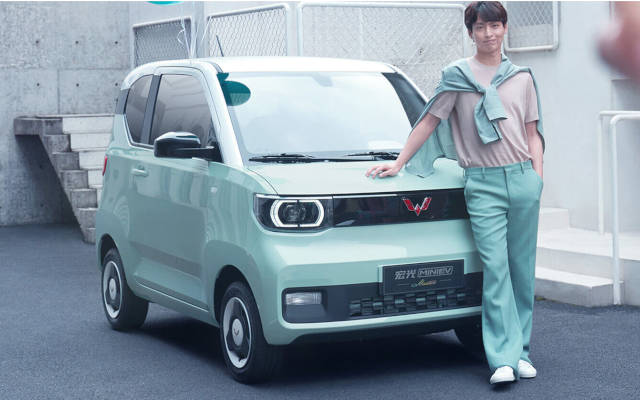China's EV Boom Masks a Hidden Inventory Problem

Second most popular EV in China: GM JV Wuling Hongguar Mini-EV
By EVWorld.com Si Editorial Team
By all appearances, China's electric vehicle market is thriving. Showrooms are packed, factories hum with activity, and monthly delivery figures from automakers like BYD and Li Auto suggest relentless growth. But beneath the surface of this high-voltage success story lies a quieter imbalance - one that analysts say could signal trouble ahead.
At the heart of the issue is a widening gap between wholesale and retail deliveries. In theory, these numbers should match: every vehicle shipped from a factory (wholesale) should be sold to a consumer (retail). A 1:1 ratio reflects a healthy, demand-driven market. But in reality, China?s auto sector is drifting from that ideal.
In April 2025, automakers reported wholesale deliveries of roughly 2.23 million passenger vehicles. Retail sales, however, lagged at 1.755 million - a ratio of 1.27:1. That means nearly half a million vehicles were pushed into dealer lots without immediate buyers. While February?s ratio was closer to balance at 1.05:1, the trend over the first quarter shows a consistent surplus: 5.5 million wholesale units versus 5.127 million retail.
This discrepancy is not just a statistical quirk. It reflects a deeper tension between production targets and consumer demand. Automakers, under pressure to maintain growth narratives and satisfy investors, often incentivize dealers to accept more inventory than they can sell. These vehicles may sit idle, depreciating in value and straining dealer finances.
"Wholesale data can be misleading," says Chen Wei, an independent auto analyst based in Shanghai. "It tells you what manufacturers are doing, not what consumers want. Retail is the real pulse of the market."
The implications are especially stark in the EV segment. China?s government has poured subsidies into electrification, and domestic brands have responded with aggressive expansion. But as incentives taper and competition intensifies, the risk of overproduction grows. EVs are particularly vulnerable to rapid technological obsolescence, meaning unsold inventory can quickly become outdated.
Some automakers have begun adjusting course. BYD, for instance, has scaled back production of lower-margin models and focused on exports to absorb excess capacity. Others, like NIO and XPeng, are investing in direct-to-consumer sales channels to bypass traditional dealership bottlenecks.
Still, the wholesale-retail gap remains a key metric for market watchers. A sustained imbalance could foreshadow price wars, margin compression, and even bankruptcies among smaller players. It also complicates China?s broader goal of becoming a global EV leader. Exporting surplus inventory may offer short-term relief, but it does not solve the underlying demand mismatch at home.
For now, the EV boom continues to dazzle. But as China?s auto sector matures, the spotlight may shift from production volume to inventory discipline. In a market where perception often drives valuation, the difference between wholesale and retail is not just technical - it is existential.
Sources
- CarNewsChina - April 2025 Sales
- Gasgoo - February 2025 Sales
- SMM - Q1 2025 Market Overview
- CnEVPost - Wholesale vs Retail Explainer
Original Backlink
Views: 111
Articles featured here are generated by supervised Synthetic Intelligence (AKA "Artificial Intelligence").
